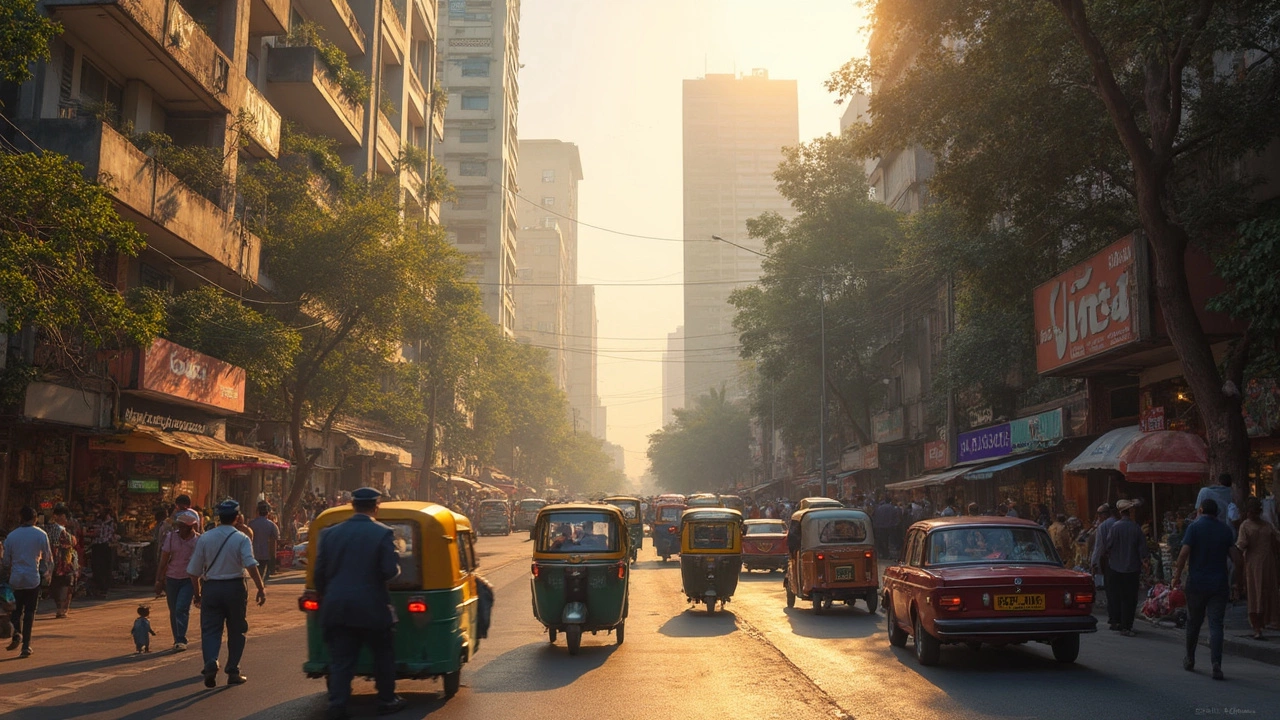Living in India: What to Expect and How to Thrive
If you’re moving to India or just curious about day‑to‑day life, you’ll notice a mix of hustle, warm people, and vibrant colors. The first thing most newcomers feel is the sheer volume of sounds – traffic horns, street vendors, and music from every corner. It can feel chaotic, but it also means you’re never bored.
What Daily Life Looks Like
Morning routines usually start early. In many cities, people grab a quick breakfast of chai and samosa from a roadside stall. Public transport is the backbone of most commutes: metros, local trains, and auto‑rickshaws zip you around. Prices are low compared to Western cities, but rush‑hour crowds can be intense, so a little patience helps.
Work hours differ by industry. Tech hubs like Bengaluru or Hyderabad run on a 9‑5 or 10‑6 schedule, while small businesses might close for a mid‑day break. Lunch is often a simple thali or a fast bite of the local special. Expect lunch breaks to be longer than what you might be used to, giving you time to unwind or run errands.
Evenings bring a social vibe. Families gather for dinner, friends meet at cafés, and street markets come alive. If you love food, Indian cuisine offers endless variety – from spicy curries to sweet desserts. Trying regional dishes is the best way to understand local culture.
Practical Tips for a Smooth Stay
1. **Learn a few local phrases.** Knowing “Namaste” (hello) and “Dhanyavaad” (thank you) earns smiles and opens doors. Even a basic grasp of Hindi or the regional language helps with directions and ordering food.
2. **Carry cash for small purchases.** While digital payments are everywhere, many small vendors still prefer cash. Keep a mix of low‑denomination notes.
3. **Stay safe with transport.** Use reputable ride‑share apps, wear a helmet on two‑wheelers, and keep an eye on your belongings on crowded trains.
4. **Adapt to the climate.** India’s weather ranges from scorching heat in the north to humid monsoons in the south. Dress in breathable fabrics, stay hydrated, and carry an umbrella during the rainy season.
5. **Understand cultural etiquette.** Remove shoes before entering homes, avoid pointing your feet at people, and be mindful of religious festivals. Respecting these customs shows you value the local way of life.
6. **Explore local services.** For internet, providers like Jio or Airtel offer affordable data plans. Health‑care is widely available; keep a list of nearby clinics and a basic medical kit.
Living in India isn’t about fitting into a single mold – the country’s diversity means each city feels its own version of life. Whether you’re in a bustling metro or a quiet hill town, the key is to stay open, ask questions, and enjoy the small moments – a shared cup of chai, a sunrise over a temple, or a spontaneous street music performance. With these basics, you’ll find your rhythm and start feeling right at home.
- Arjun Bhardwaj
- 20-06-25
- Life Status
Is Quality of Life in India Good? Honest Facts and Everyday Tips
Quality of life in India stirs up strong opinions, with big differences depending on where you live and your personal situation. From modern cities with booming jobs to rural villages facing basic challenges, India's living standards cover the whole spectrum. This article digs into work-life balance, public services, health and safety, and daily life hacks. You'll find eye-opening facts, useful advice, and honest insights about what it's really like to live in India. No sugar-coating, just the real deal.
Details